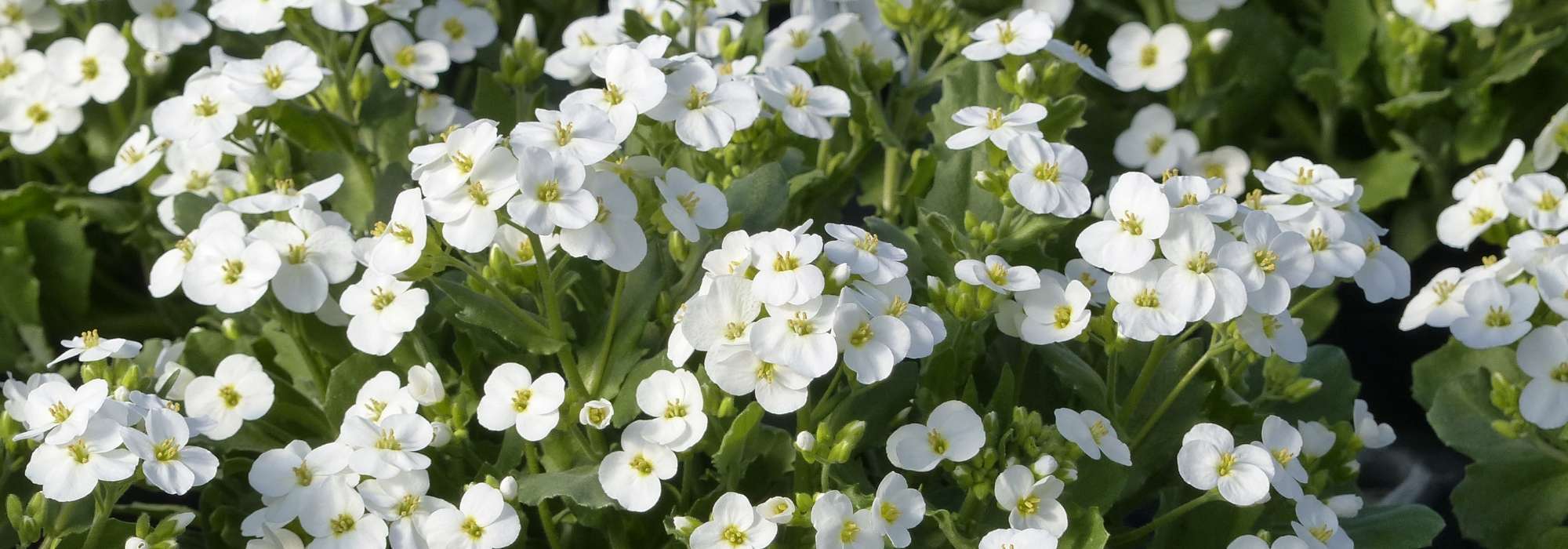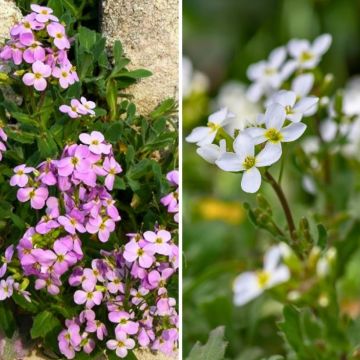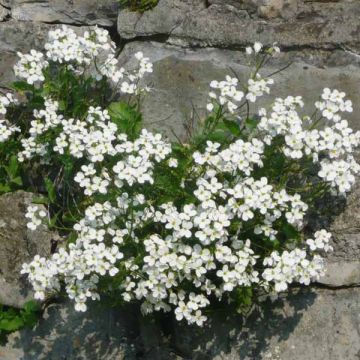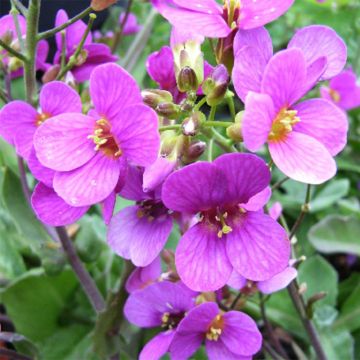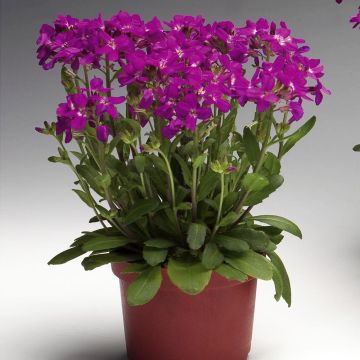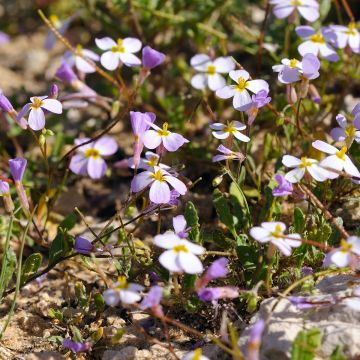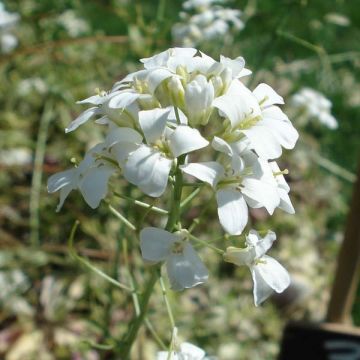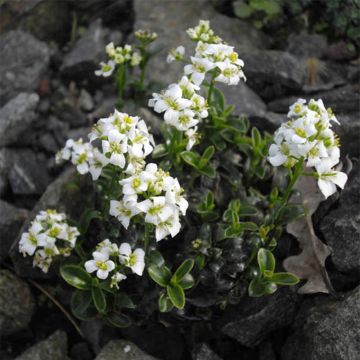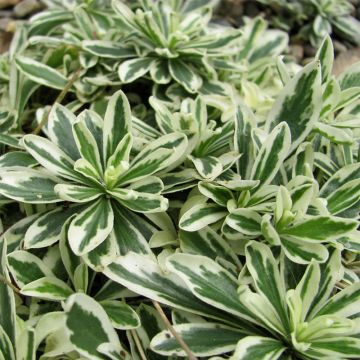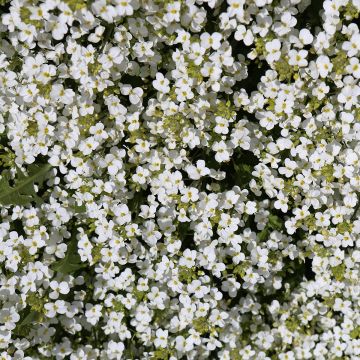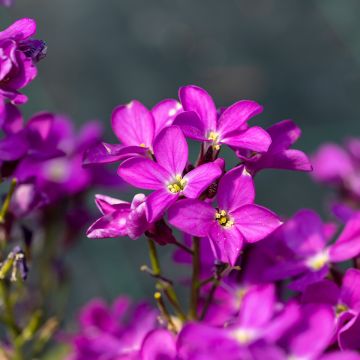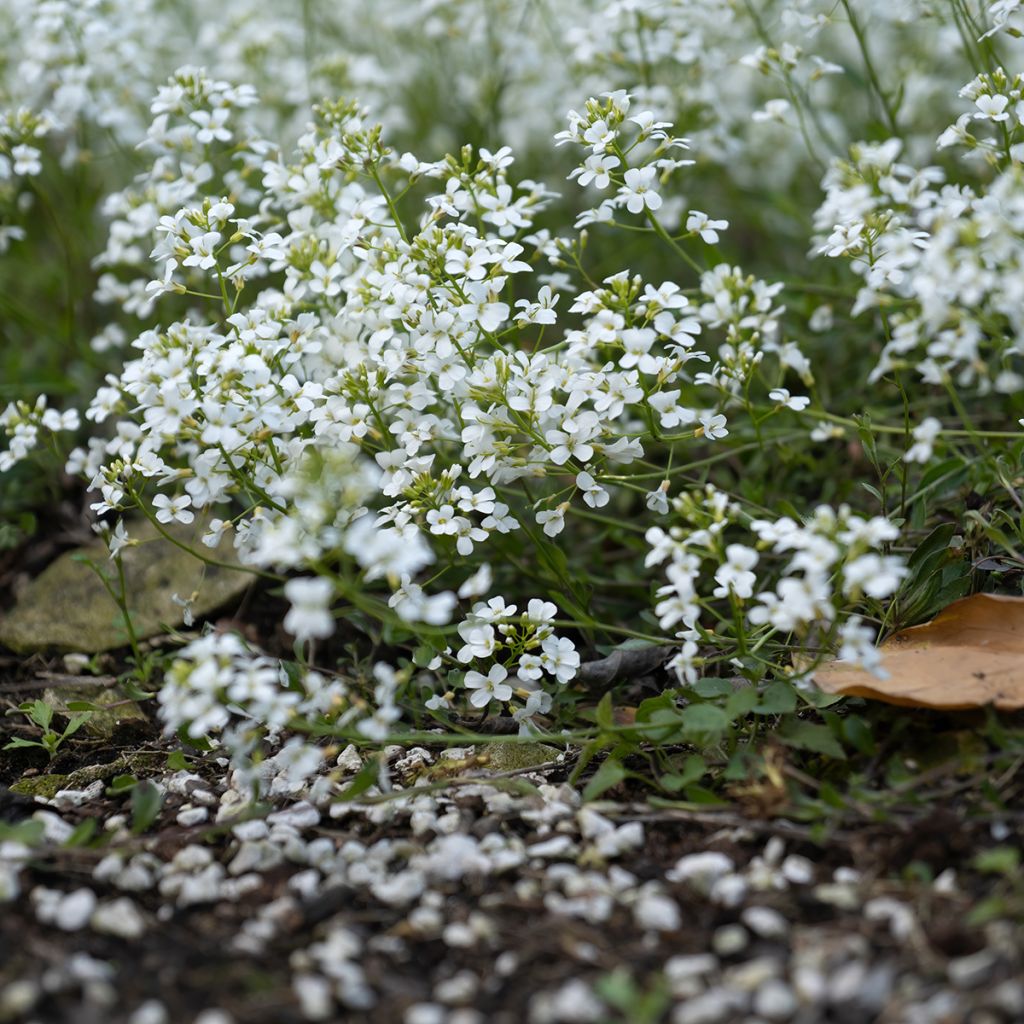

Arabis ferdinandi-coburgii
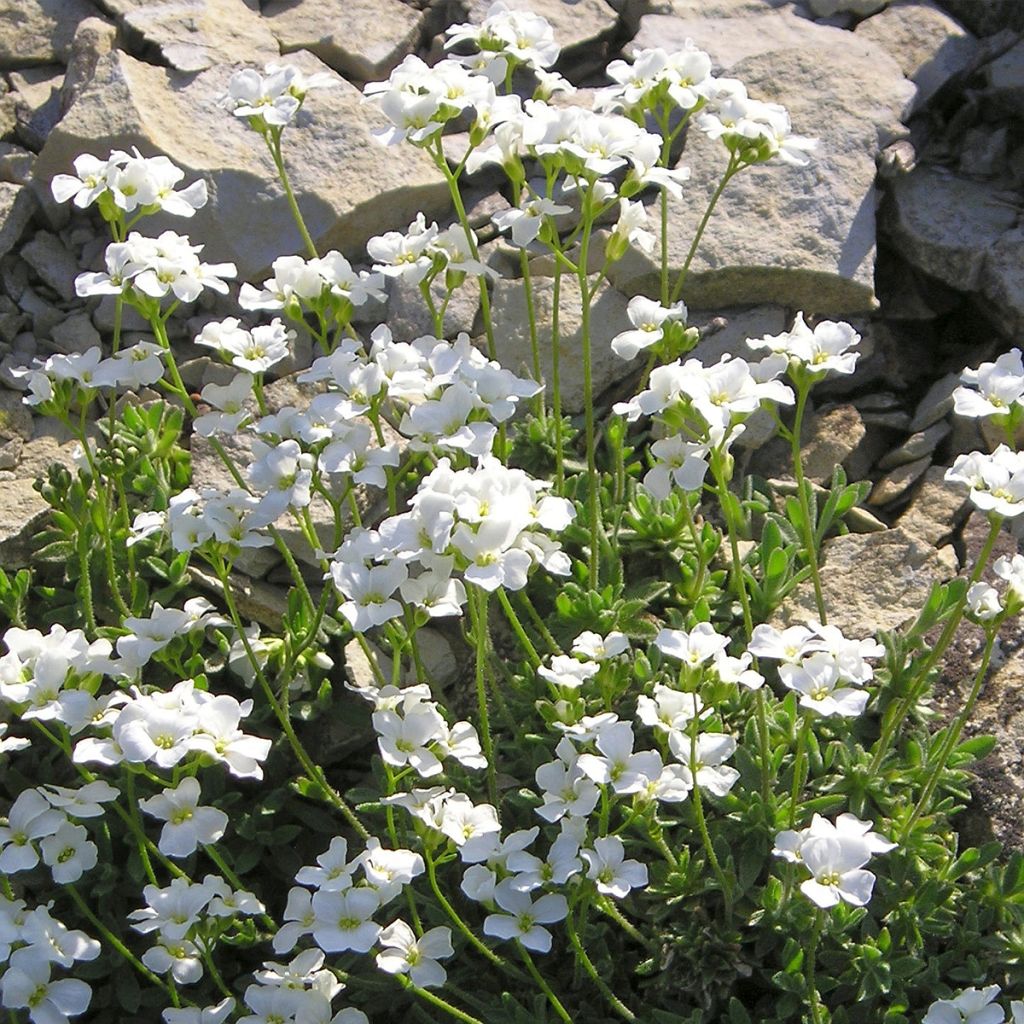

Arabis ferdinandi-coburgii
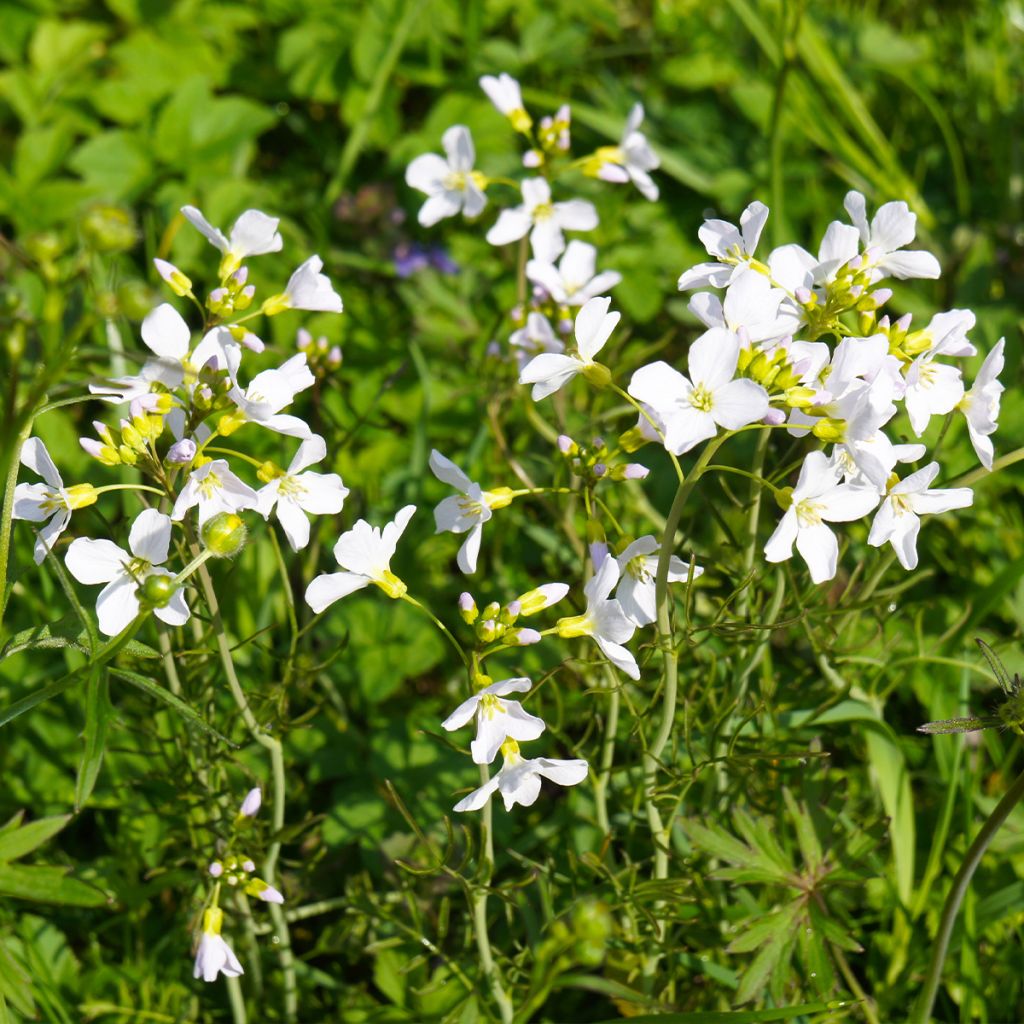

Arabis ferdinandi-coburgii
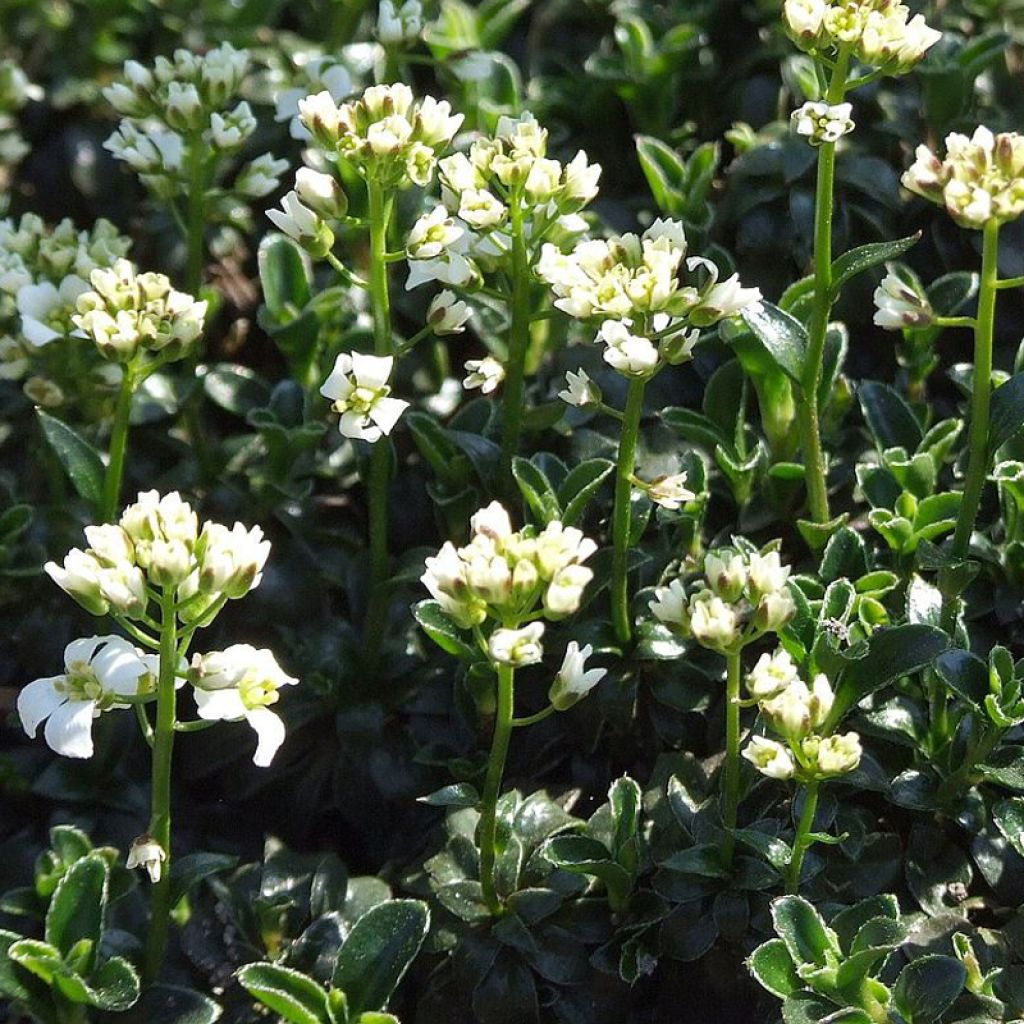

Arabis ferdinandi-coburgii
Arabis ferdinandi-coburgii
Arabis ferdinandi coburgii
Coburg's Rockcress, King of Saxony's Rockcress
It's been a year since they were planted, the recovery was difficult, but at this point they are well established. I am looking forward to the flowering next spring.
Pascal, 05/09/2024
Special offer!
Receive a €20 voucher for any order over €90 (excluding delivery costs, credit notes, and plastic-free options)!
1- Add your favorite plants to your cart.
2- Once you have reached €90, confirm your order (you can even choose the delivery date!).
3- As soon as your order is shipped, you will receive an email containing your voucher code, valid for 3 months (90 days).
Your voucher is unique and can only be used once, for any order with a minimum value of €20, excluding delivery costs.
Can be combined with other current offers, non-divisible and non-refundable.
Home or relay delivery (depending on size and destination)
Schedule delivery date,
and select date in basket
This plant carries a 12 months recovery warranty
More information
We guarantee the quality of our plants for a full growing cycle, and will replace at our expense any plant that fails to recover under normal climatic and planting conditions.
Would this plant suit my garden?
Set up your Plantfit profile →
Description
The Arabis ferdinandi-coburgii, also known as Rock Cress, is a small and rewarding rock plant nicknamed 'rockcress'. It is a perennial rock plant par excellence, a small creeping plant that is very hardy and thrives in a pocket of soil between rocks. It forms beautiful, evergreen cushions in winter and produces clusters of small white flowers in spring.
Arabis ferdinandi-coburgii (synonymous with Arabis procurrens) belongs to the family of Brassicaceae (formerly Cruciferae). It is a botanical species native to the mountains of southeastern Europe, especially the Balkans and the Carpathians. Very cold-resistant and water-efficient, this rock cress tolerates limestone soils well. It has the same growth habit as Arabis caucasica, with smaller glossy leaves and a shorter habit. It is a perennial with creeping and running roots, forming a dense and rounded shrub about 20 cm (8in) in diameter, which spreads little over time. When in bloom, it measures approximately 20 cm (8in) in height. Flowering occurs from April to June, depending on the climate. The white flowers with four petals, carried by numerous peduncles, appear in small upright clusters 3 to 8 cm (1 to 3in) long above dark green foliage. Its small, oblong, narrow, spatulate, more or less smooth and glossy leaves form a small cushion of rosettes. The foliage remains in winter except in the coldest regions.
The Rock Cress is content with ordinary soil and is easy to grow in well-drained soil. It gives the best result when planted with stones, in the sun, as ground cover, bordering a flowerbed, in a flowering pavement, covering a low wall, or on a rocky slope. It can be combined with other rock perennials such as Alyssum, Iberis, Moss Phlox or Aubrieta, or bulbs.
Arabis ferdinandi-coburgii in pictures
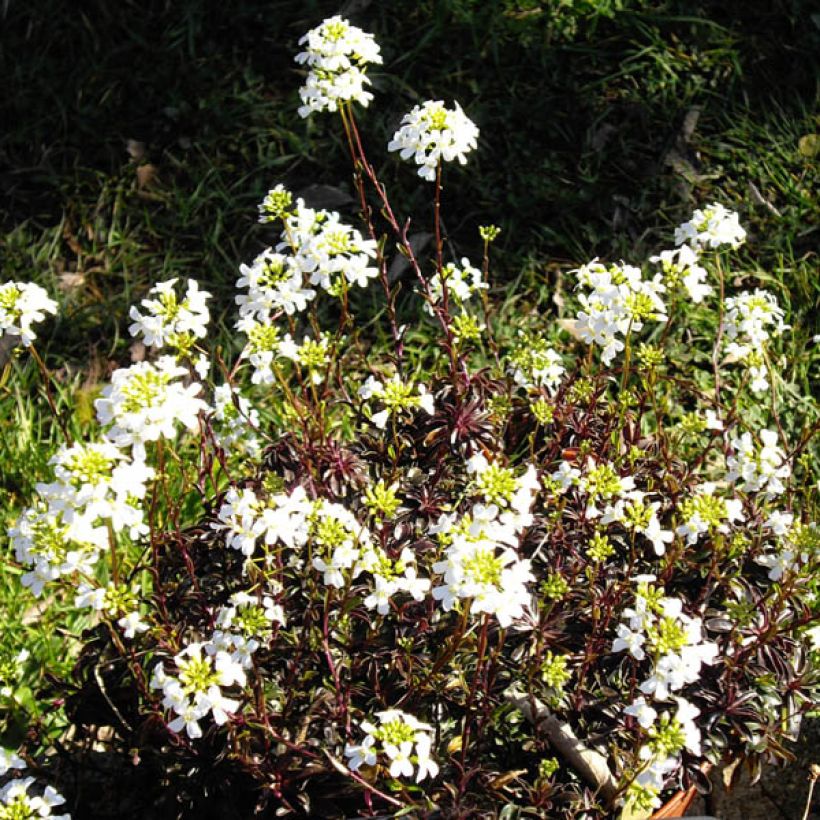

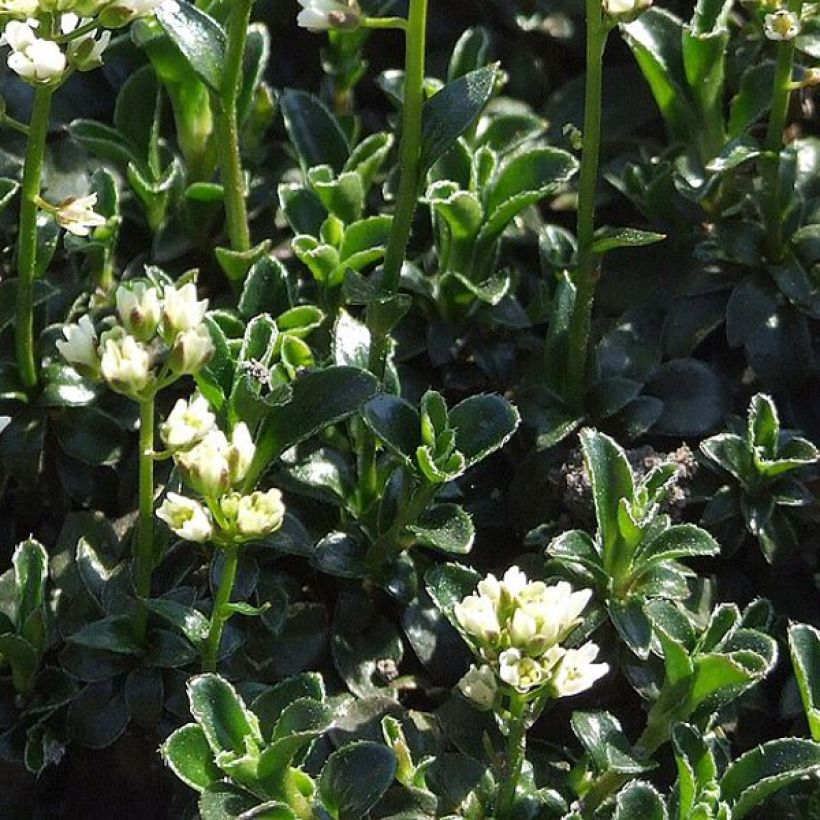

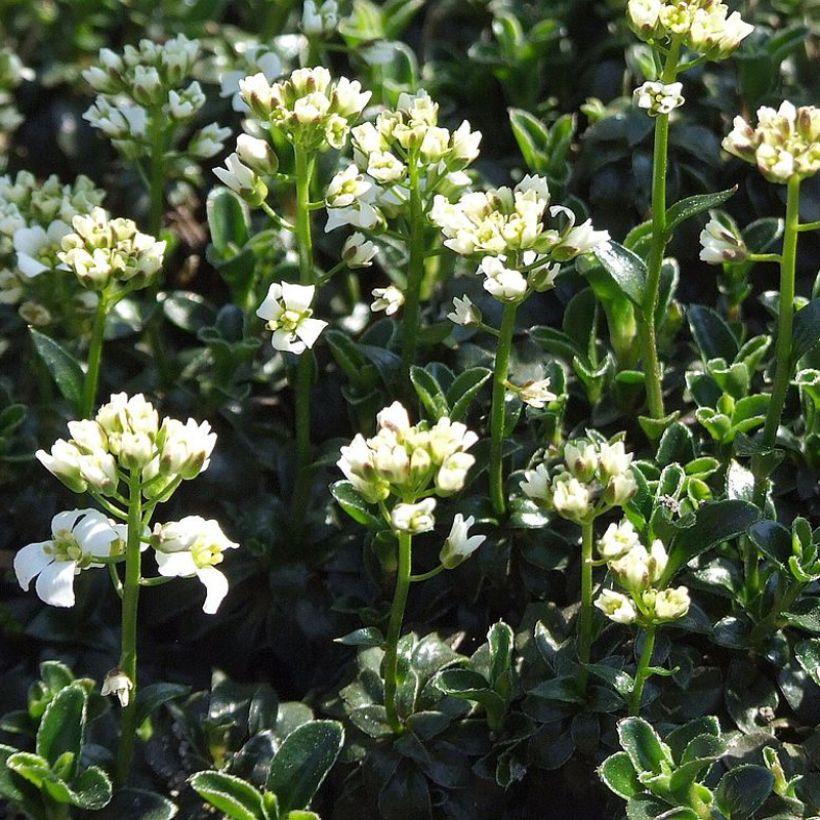

Flowering
Foliage
Plant habit
Botanical data
Arabis
ferdinandi coburgii
Brassicaceae
Coburg's Rockcress, King of Saxony's Rockcress
Southern Europe
Other Arabis
View all →Planting and care
Arabis plants thrive in well-drained soil with full sun exposure. They can grow in rocky or gravelly soil and tolerate slightly acidic, neutral, or limestone soil. These plants are durable and can endure summer drought once their roots are established. Plant from spring to autumn to grow them and water regularly until they are established. Be sure to prevent neighbouring plants or weeds from disrupting their slow establishment. After flowering, you can use shears to prune the shrubs and encourage branching and denser growth. Arabis plants are easy to grow and do not have any known enemies in our gardens.
Planting period
Intended location
Care
Planting & care advice
-
, onOrder confirmed
Reply from on Promesse de fleurs
Haven't found what you were looking for?
Hardiness is the lowest winter temperature a plant can endure without suffering serious damage or even dying. However, hardiness is affected by location (a sheltered area, such as a patio), protection (winter cover) and soil type (hardiness is improved by well-drained soil).

Photo Sharing Terms & Conditions
In order to encourage gardeners to interact and share their experiences, Promesse de fleurs offers various media enabling content to be uploaded onto its Site - in particular via the ‘Photo sharing’ module.
The User agrees to refrain from:
- Posting any content that is illegal, prejudicial, insulting, racist, inciteful to hatred, revisionist, contrary to public decency, that infringes on privacy or on the privacy rights of third parties, in particular the publicity rights of persons and goods, intellectual property rights, or the right to privacy.
- Submitting content on behalf of a third party;
- Impersonate the identity of a third party and/or publish any personal information about a third party;
In general, the User undertakes to refrain from any unethical behaviour.
All Content (in particular text, comments, files, images, photos, videos, creative works, etc.), which may be subject to property or intellectual property rights, image or other private rights, shall remain the property of the User, subject to the limited rights granted by the terms of the licence granted by Promesse de fleurs as stated below. Users are at liberty to publish or not to publish such Content on the Site, notably via the ‘Photo Sharing’ facility, and accept that this Content shall be made public and freely accessible, notably on the Internet.
Users further acknowledge, undertake to have ,and guarantee that they hold all necessary rights and permissions to publish such material on the Site, in particular with regard to the legislation in force pertaining to any privacy, property, intellectual property, image, or contractual rights, or rights of any other nature. By publishing such Content on the Site, Users acknowledge accepting full liability as publishers of the Content within the meaning of the law, and grant Promesse de fleurs, free of charge, an inclusive, worldwide licence for the said Content for the entire duration of its publication, including all reproduction, representation, up/downloading, displaying, performing, transmission, and storage rights.
Users also grant permission for their name to be linked to the Content and accept that this link may not always be made available.
By engaging in posting material, Users consent to their Content becoming automatically accessible on the Internet, in particular on other sites and/or blogs and/or web pages of the Promesse de fleurs site, including in particular social pages and the Promesse de fleurs catalogue.
Users may secure the removal of entrusted content free of charge by issuing a simple request via our contact form.
The flowering period indicated on our website applies to countries and regions located in USDA zone 8 (France, the United Kingdom, Ireland, the Netherlands, etc.)
It will vary according to where you live:
- In zones 9 to 10 (Italy, Spain, Greece, etc.), flowering will occur about 2 to 4 weeks earlier.
- In zones 6 to 7 (Germany, Poland, Slovenia, and lower mountainous regions), flowering will be delayed by 2 to 3 weeks.
- In zone 5 (Central Europe, Scandinavia), blooming will be delayed by 3 to 5 weeks.
In temperate climates, pruning of spring-flowering shrubs (forsythia, spireas, etc.) should be done just after flowering.
Pruning of summer-flowering shrubs (Indian Lilac, Perovskia, etc.) can be done in winter or spring.
In cold regions as well as with frost-sensitive plants, avoid pruning too early when severe frosts may still occur.
The planting period indicated on our website applies to countries and regions located in USDA zone 8 (France, United Kingdom, Ireland, Netherlands).
It will vary according to where you live:
- In Mediterranean zones (Marseille, Madrid, Milan, etc.), autumn and winter are the best planting periods.
- In continental zones (Strasbourg, Munich, Vienna, etc.), delay planting by 2 to 3 weeks in spring and bring it forward by 2 to 4 weeks in autumn.
- In mountainous regions (the Alps, Pyrenees, Carpathians, etc.), it is best to plant in late spring (May-June) or late summer (August-September).
The harvesting period indicated on our website applies to countries and regions in USDA zone 8 (France, England, Ireland, the Netherlands).
In colder areas (Scandinavia, Poland, Austria...) fruit and vegetable harvests are likely to be delayed by 3-4 weeks.
In warmer areas (Italy, Spain, Greece, etc.), harvesting will probably take place earlier, depending on weather conditions.
The sowing periods indicated on our website apply to countries and regions within USDA Zone 8 (France, UK, Ireland, Netherlands).
In colder areas (Scandinavia, Poland, Austria...), delay any outdoor sowing by 3-4 weeks, or sow under glass.
In warmer climes (Italy, Spain, Greece, etc.), bring outdoor sowing forward by a few weeks.






























